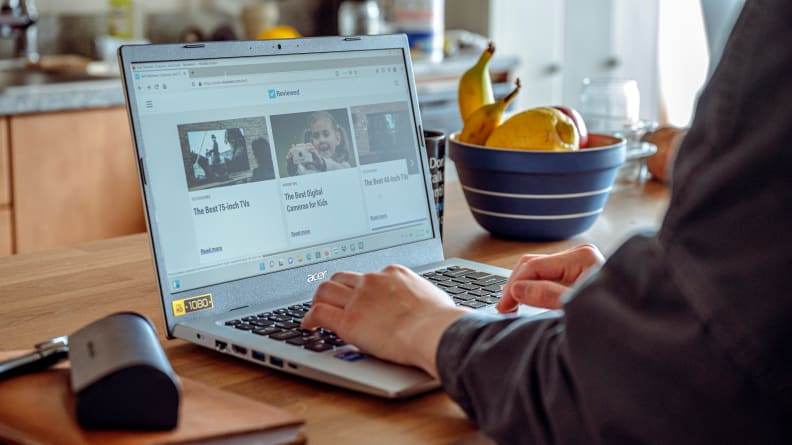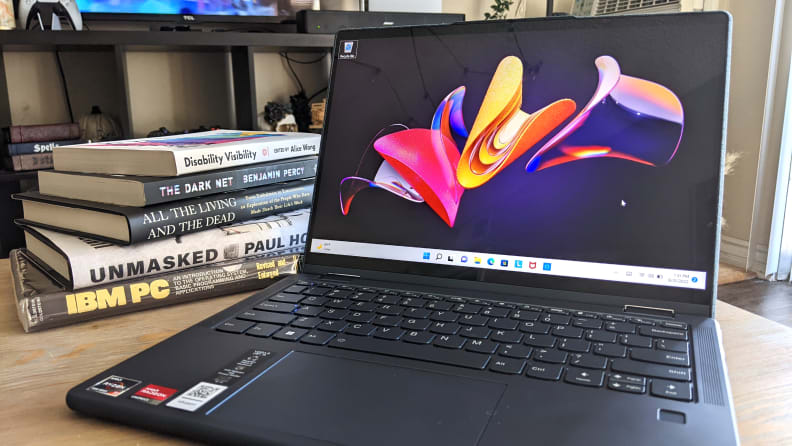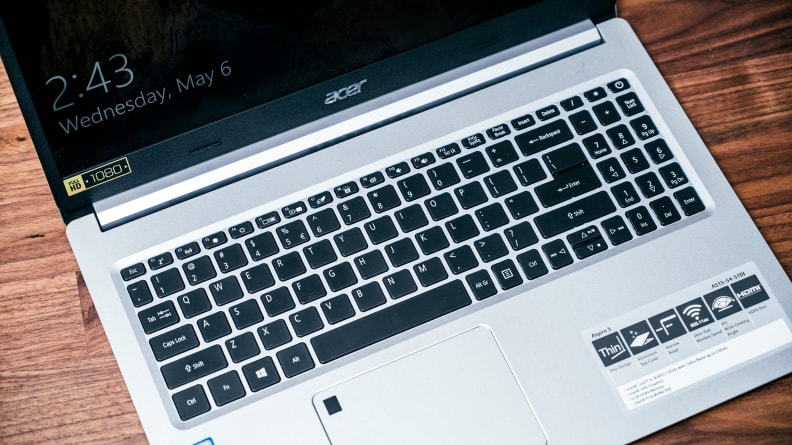The best laptops under $500 probably won’t impress you with their performance or aesthetics. But when you are on the barest-of-bones budget, putting your money toward something realiable becomes priority number one. A laptop in this price range should run simple tasks quickly, have a decent amount of battery life, and shouldn’t feel like it will fall apart if you poke it. Anything else and you’re looking at laptops that cost upwards of $1,000—or more.
The good news: not only do those laptops exist, but also, thanks to advancements in CPU technology, you don’t have to compromise on speed as was the case several years ago. Our pick for the best overall sub-$500 laptop, the Acer Aspire 5,
(available at Amazon for $492.50)
has an 11th-gen Intel processor, but even if you needed to batch-tag hundreds of photos, you wouldn’t have to wait around forever for the laptop to finish.

Credit:
Reviewed / Jackson Ruckar


Credit:
Reviewed / Joanna Nelius
Other Laptops Under $500 Laptops We Tested
How We Test Laptops Under $500

Credit:
Reviewed / Jackson Ruckar
We test laptops for their processing capability, graphics, battery life, and screen brightness.
Here at Reviewed, we put every laptop we can through a standard battery of tests and benchmarks. We measure graphics power, processor capability, battery life, screen brightness, and more. We test multiple platforms and form factors.
We use popular, industry-standard benchmarks like Geekbench and 3DMark to gauge how well the laptop can multitask, run games, and more. We also get hands-on with each machine to gauge usability factors like convenience and durability.
We also test battery life by simulating a long stretch of moderate web browsing. We put the screen brightness at 200 nits, which is fairly moderate but close to the maximum for many of these budget models. Then we set them to cycle through popular websites until they run out of power. This gives us an idea of how much work you can get done on a single charge.
When it comes to laptops, $500 is definitely the low end. If you spend any less than that, you may wind up with something too slow to be useful, or too shoddy to last long.
On a really tight budget, we strongly recommend buying a refurbished laptop instead. Buying refurbished can get you a like-new version of last year’s model at a sizable discount.
In any case, laptop shopping in this price range means you probably won’t find everything in one package. Think about what you want from your machine, and what you can skip. There are a few factors to consider.
Performance
The CPU, GPU, RAM, and storage inside your PC affect its performance. They determine how well your computer can multitask, handle intensive tasks like gaming, and store all your files. The better the specs, the snappier the laptop will feel as you work.
You’ll see many of Intel’s entry-level i3 and mid-range i5 processors here. You’ll also usually see RAM cap out at 8GB. (You can get away with 4GB. However, given how much memory modern web browsing can take up, avoid it if you can afford to.)
One place you don’t want to scrimp is storage. Most people find that by the time they’re finished downloading movies or taking photos, they’ve used more storage than they realized. If you can’t afford a lot of storage now, look for an SD card slot. That gives you the option to buy more storage affordably later on.
Build Quality
Since you’re lugging this computer around, you want it to be able to withstand some wear and tear. You also want interaction with it to be as smooth as possible. That means making sure that the keyboard and trackpad are easy to use.
Portability and Features
Cramming a lot of features into a small space tends to drive up the price. That’s why many budget laptops are larger than their high-end counterparts. You’re way less likely to find features like fingerprint scanners at this price point. After all, each bell and whistle cost money to include.
Platform
Consider your operating system, too. Windows is still the dominant OS these days, especially for gaming. You’ll also probably want Windows if you need certain software for work. Lots of photo and video editing software is also Windows-specific
Many budget laptops come with Windows in “S Mode,” which limits your app installation to apps on the Microsoft Store. Luckily, you can easily remove it, and we recommend nearly everyone do so.
Windows laptops at this price point also typically have pre-installed “bloatware,” too. These included freebies offer little value but can bog your computer down. You can remove them from Windows’ uninstall menu. You can also completely wipe out bloatware by installing a clean copy of Windows to override the pre-installed, bloated version that comes out of the box.
If most of what you do is online, Chromebooks can offer surprising utility at a great price. Beyond Netflix and Gmail, there’s plenty of web-based work software like Google Docs. Add in online photo editors like Pixlr and Chromebooks can make a lot of sense. Many web apps can even work offline when you don’t have Wi-Fi.
Chromebooks are also cheaper since so much processing effort happens in the cloud instead of in the machine. They have a Linux-based operating system, so they tend to be free of viruses and bloatware. If you use Chrome Remote Desktop, you can remotely access your Windows PC on the go.
Display Size
The display size looks a little different at this price point. While the laptops themselves are often larger, screen sizes tend to be smaller to help save on cost. Many of the models we’ve listed here float around 11 inches. You may occasionally find something larger, but generally, this space is dominated by screens that are 13 inches or less.
You’ll also want to consider how many USB ports the laptop has, whether you need HDMI and Ethernet, and how comfortable the keyboard and trackpad are to use—this can vary quite a bit from model to model, and it’s important to get something responsive and durable.












